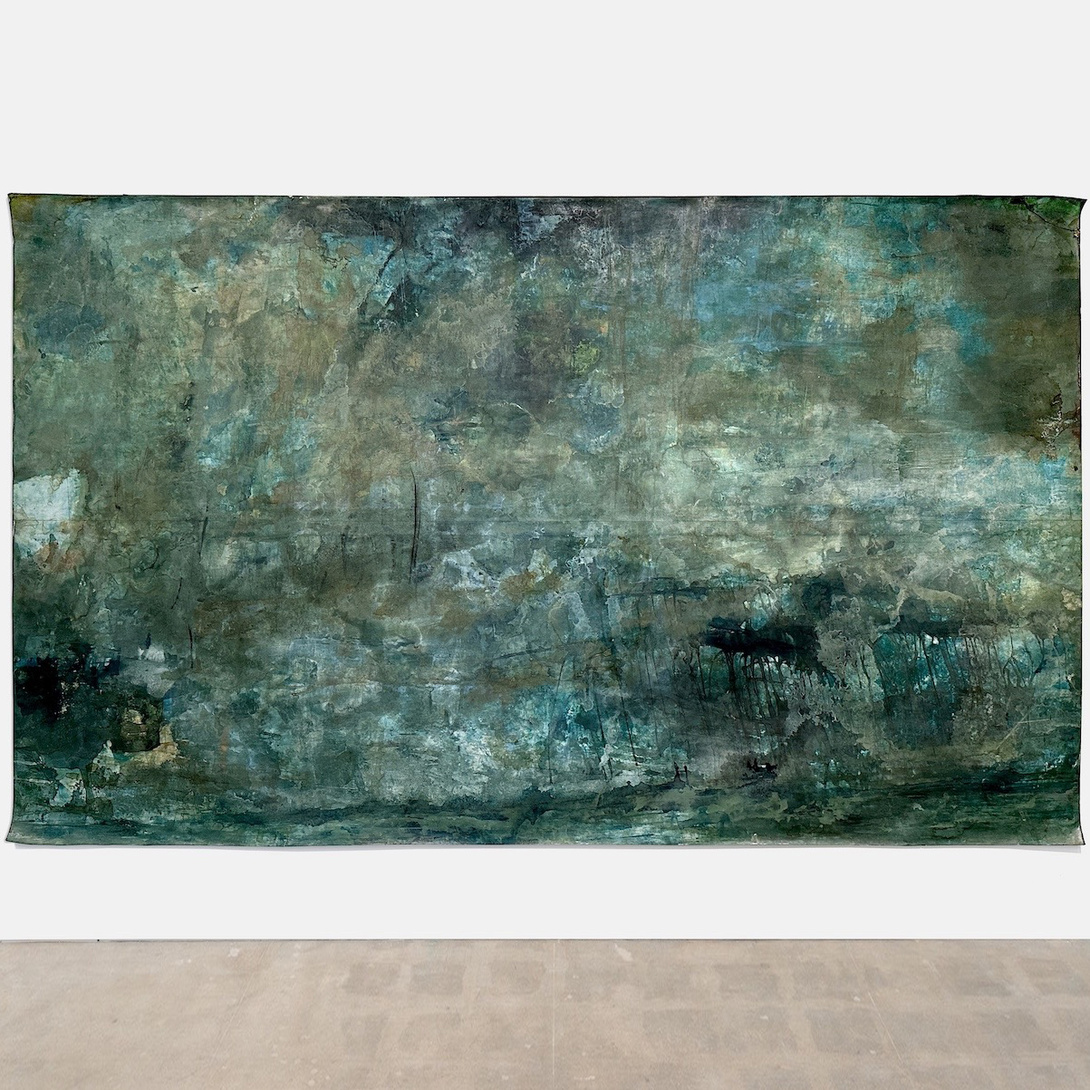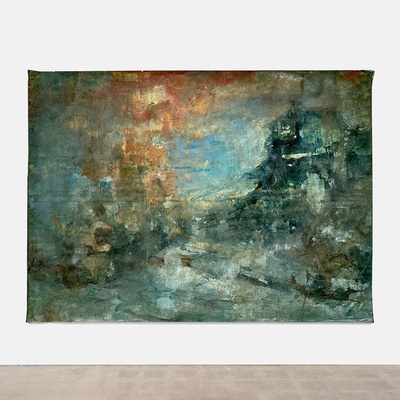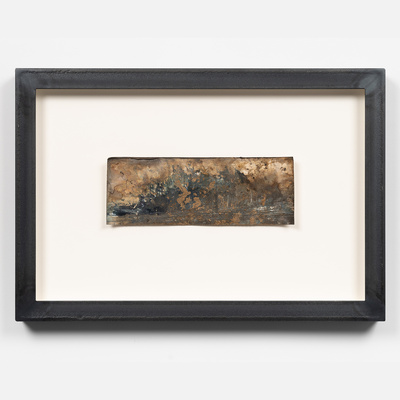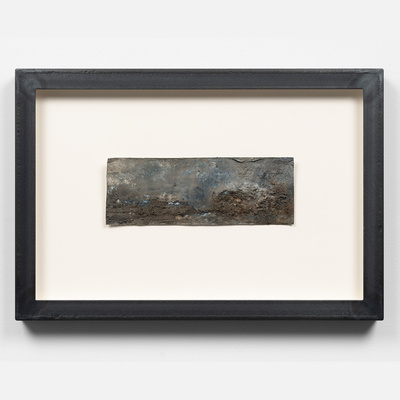
Athena LaTocha: Frieze Los Angeles 2025
Booth F07
While the wildfires were raging in Canada in 2023, Athena LaTocha envisioned a post-apocalyptic world of a forest consumed by wildfire. This body of work was the subject an exhibition at the Black Family Visual Arts Center at Dartmouth College in April of 2024 entitled Athena LaTocha: Made in Exile. Babst Gallery will be showing two of the works from this series, Chimera (2024) and Harbinger (2023,) at Frieze Los Angeles in 2025.
In these works, LaTocha burned wood from the New Hampshire forests, and collected sticks, rocks, bricks, and tire-shreds from the area. “I unfurl large rolls of paper on the floor and immerse myself in the painting, much like being in the landscape. Working from the inside out, I disperse a palette of earth-toned inks with distilled water and industrial solvents and use aggressive tools such as wire brushes, scrap metal, and reclaimed tire shreds to push the ink around. Surrounded on all sides by the expanse of paper, I move through the work as if I am traversing the terrain.”
In the catalogue from the Dartmouth exhibition, Lucy Lippard writes, "The term monumental is often used to describe LaTocha's work...the scale and density of her art is close to unparalleled in contemporary Native painting, due in part to the fact that she was raised in Eagle River, Alaska, where the battle between nature and industry takes place on a grand scale that is all too visible, though far from her mother's tribal citizenship in the Standing Rock tribe (Hunkpapa Lakota) and Keweenaw Bay Ojibwe. (The artist is of both nations.) The huge paintings are replete with the drama of nature at her most dramatic, evoking storms, sunsets, mountains, plains and all other manifestations of the world that surrounds us. Encouraging a sense of humility when confronted with something bigger than oneself, she might be called the contemporary (feminist) Bierstadt or Turner."
Whereas these 19th century artists might view the landscape as an empty canvas for humans to act upon, LaTocha says,"Sometimes I'm reluctant to use the word 'landscape' because there's a certain kind of genre, a certain kind of concept or ideology when you think about the idea of landscape. It connotes a kind of reverence or allusion to something. It's usually something that you're looking at or looking upon. It's this view or window into another world, a natural world or an industrial one." LaTocha adds, "in the aboriginal sense one is actively moving through the landscape. Humans are part of the landscape, not separate from it."
Athena LaTocha (b. Anchorage, Alaska) has exhibited at MoMA PS1; the National Gallery of Art, Washington, DC; The Brooklyn Museum, Brooklyn; Crystal Bridges Museum of American Art, Bentonville; CUE Art Foundation, New York; Virginia Museum of Fine Arts, Richmond; The Aldrich Contemporary Art Museum, Ridgefield; IAIA Museum of Contemporary Native Arts, Santa Fe; Eiteljorg Museum of American Indians and Western Art, Indianapolis; New Orleans Museum of Art, amongst others. Her work is in the collections of institutions such as the Dallas Museum of Art, the Virginia Museum of Fine Arts, Richmond, Hessel Museum of Art, Annandale-on-Hudson, Plains Art Museum, Fargo, ND, amongst others. LaTocha is the recipient of numerous awards, among them the Foundation for Contemporary Arts Visual Arts Grant (2024), Anonymous Was A Woman Award (2023), Rockefeller Brothers Fund Pocantico Art Prize in Visual Arts (2022), the National Academy Affiliated Fellowship at the American Academy in Rome (2021), Joan Mitchell Foundation (2019, 2016), Wave Hill (2018), and the Robert Rauschenberg Foundation (2013). The artist lives and works in New York.
Athena LaTocha, Chimera, 2024. Shellac ink, synthetic walnut ink, shellac, charcoal from burned New Hampshire trees on paper. 7 feet 4 inches x 10 feet; 223.5 x 304.8 cm.
Athena LaTocha, Harbinger, 2024. Shellac ink, synthetic walnut ink, shellac, charcoal from burned New Hampshire trees on paper. 7 feet 4 inches x 12 feet; 223.5 x 365.8 cm.
Athena LaTocha, Untitled No. 2, 2022. Shellac ink, earth and pulverized brick from the Green-Wood Cemetery, demolition sediment from a Brooklyn construction site, glass microbeads from New York City Department of Transportation on paper in custom raw steel artist frame. 18 1/2 x 27 x 2 inches; 47 x 68.6 x 5.1 cm.
Athena LaTocha, Untitled No. 5, 2022. Shellac ink, earth and pulverized brick from the Green-Wood Cemetery, demolition sediment from a Brooklyn construction site, glass microbeads from New York City Department of Transportation on paper in custom raw steel artist frame. 18 1/2 x 27 x 2 inches; 47 x 68.6 x 5.1 cm.



